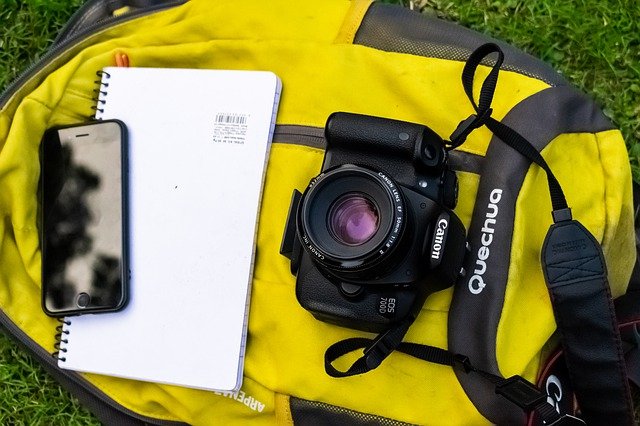Is a smartphone camera better than a DSLR? This question makes a lot of sense because camera technological advancements have been made in smartphones. It leaves consumers thinking whether a smartphone camera is able to replace a DSLR camera or even works better.
So, let us learn about the best features and benefits of both types of cameras and decide what is best for you.
Advantages of DSLR Camera
Aperture and ISO Settings
With a DSLR camera, you have more creative exposure control when it comes to aperture, speed, and ISO settings. The aperture of a camera phone refers to the opening of a lens. It’s a hole in the camera that is likened to the eyes’ pupils, controlling the amount of light.
International Organization of Standardization or ISO settings refer to the level of a camera’s sensitivity to the presence of light in the scene. A lower ISO number means less sensitivity to the light. On the other hand, a higher ISO number means increased light sensitivity of your camera.
With creative exposure control of a DSLR camera, it means that you can easily create beautiful backgrounds, like blurred waterfalls. On the other hand, smartphones can simulate these scenarios, but they’re only as good as the software.
Zooming Capabilities
DSLR cameras have lenses with zooming capabilities that are not available in smartphones.
Optical Image Stabilization
The DSLR cameras have a better image quality because of the variable aperture, allowing them to control the light entering the camera better than smartphones. Although DSLR has better image stabilization, the best smartphones use the Optical Image Stabilization (OIS) system to get rid of camera shake.
Lens
The 200mm lens in a DSLR is an amazing feature for many scenarios, capturing great image quality. DSLR cameras enable you to use various lenses like fisheye lenses with a focal length as low as eight to 14mm. Also, you can use 50mm lenses for shooting portraits.
Sensor
The major difference between smartphone cameras and DSLR cameras is the sensor. Smartphones have smaller camera sensors, while DSLR has bigger sensors, which are about 10 to 15 times bigger than the sensors of smartphones. With bigger sensors, more light comes in for crispier shots.
Megapixels
Most DSLR cameras have larger sensors of up to 40 megapixels or even more. For this reason, the resolution of the photos taken is greater than smartphone-taken photos.
Battery Life
All DSLR cameras have longer-lasting batteries than smartphones, allowing you to shoot more. If you run out of battery, you can easily and rapidly swap it and continue shooting. Unlike a smartphone wherein you still need to charge it.
Advantages of Smartphone Camera
Autofocus
High-end smartphones usually have autofocus, which is similar to the zooming capabilities of DSLR cameras discussed above. It enables shooting really close objects or macro shooting.
Laser Auto Focus
This spec of camera phones is outfitted with a laser to transmit the distance of a subject. It is a good feature for taking low light photos.
Revolutionized Photographics Workflow
Cloud technology involves using the web as a storage system, giving users unlimited space and the best automation. With cloud technology, cloud photo sharing is now possible. There is no need to manually upload images on a computer or organize them manually. In just seconds, you can share smartphone-taken photos right away.
Back-side Illuminated Sensors (BSI)
The Back-Side Illuminated (BSI) sensors of smartphones have allowed larger sensors without adding thickness to the phone. One benefit is that apertures can be larger, so more information can be captured and less noise when images are captured.
Media Sharing
Smartphone cameras make media sharing a lot easier than DSLR cameras. A smartphone camera is a shoot-and-share device. You can easily take shots and set them to automatically post on Facebook or other of your social media accounts.
Resolution
With the increasing computer power of smartphones, they have increased sensor resolution, overtaking compact cameras.
Photo-editing Feature
Smartphone cameras can shoot raw files and JPEGs. It only means that you can now better control how an image looks with smartphones’ built-in editing features. A good editing app allows you to produce photos that look incredible on the web or printed in small sizes.
Disadvantages of Smartphone Camera
Zooming
The zooming capabilities of smartphone cameras only give a false impression that it can zoom when taking photos. However, it’s only an illusion. While smartphones can enlarge a portion of the image, the clarity and sharpness are greatly reduced.
Disadvantages of DSLR Camera
Size and Weight
DSLR cameras are bulky and heavier.
Final Verdict
After reviewing the features and benefits and answering all possible questions about whether smartphone cameras are as good as DSLR, the toughest question would rely on your usage. It all boils down to your expectations about image quality, the lens you prefer, and how much control you want while taking photos or videos.
While a lot of people think smartphones are good enough to take selfies and snapshots, some people prefer DSLR, especially when taking major events, like weddings, christening, and sporting events. DSLR cameras are still the best camera for professional photography. For everyday use, smartphone cameras prove to be the best practical solution.
FAQs


